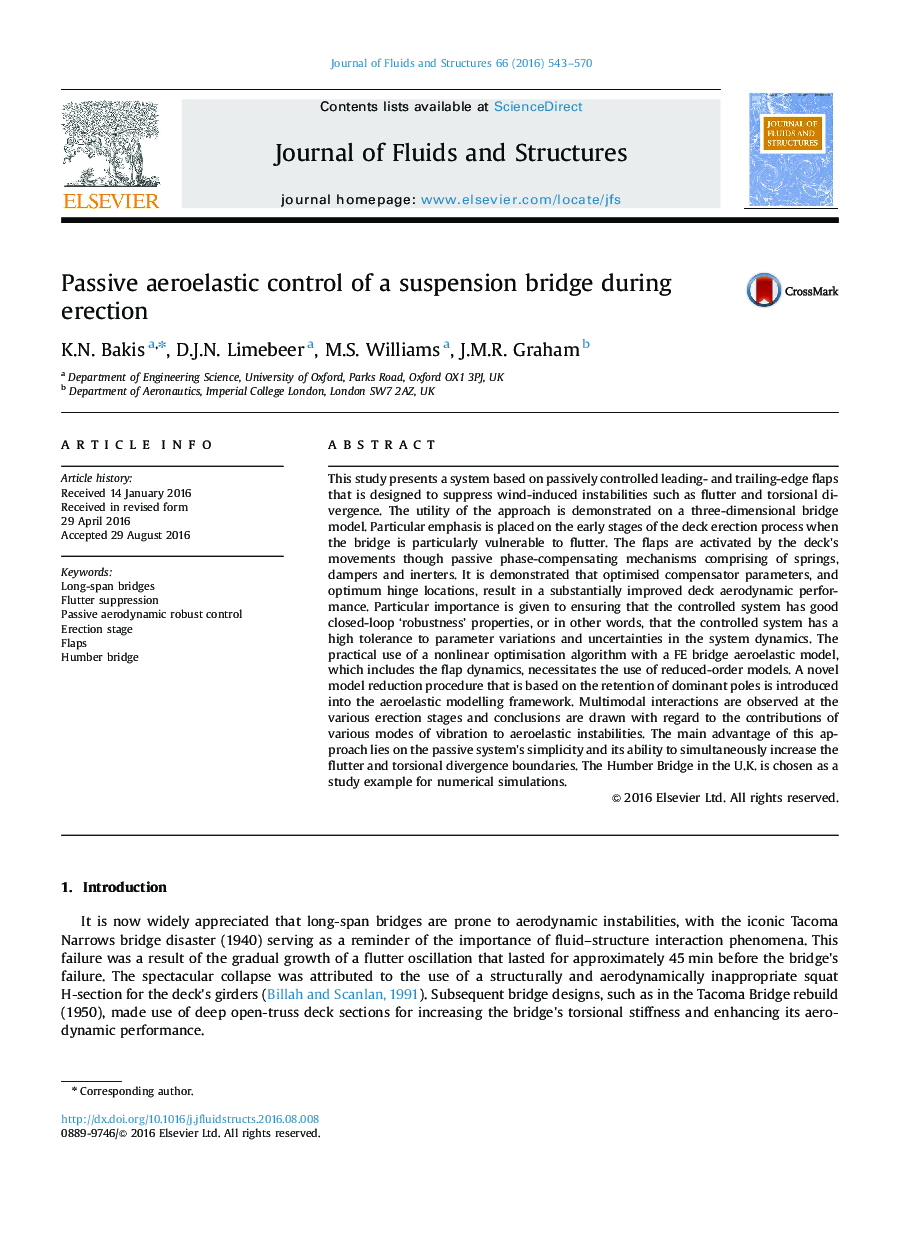| Article ID | Journal | Published Year | Pages | File Type |
|---|---|---|---|---|
| 7175889 | Journal of Fluids and Structures | 2016 | 28 Pages |
Abstract
This study presents a system based on passively controlled leading- and trailing-edge flaps that is designed to suppress wind-induced instabilities such as flutter and torsional divergence. The utility of the approach is demonstrated on a three-dimensional bridge model. Particular emphasis is placed on the early stages of the deck erection process when the bridge is particularly vulnerable to flutter. The flaps are activated by the deck's movements though passive phase-compensating mechanisms comprising of springs, dampers and inerters. It is demonstrated that optimised compensator parameters, and optimum hinge locations, result in a substantially improved deck aerodynamic performance. Particular importance is given to ensuring that the controlled system has good closed-loop 'robustness' properties, or in other words, that the controlled system has a high tolerance to parameter variations and uncertainties in the system dynamics. The practical use of a nonlinear optimisation algorithm with a FE bridge aeroelastic model, which includes the flap dynamics, necessitates the use of reduced-order models. A novel model reduction procedure that is based on the retention of dominant poles is introduced into the aeroelastic modelling framework. Multimodal interactions are observed at the various erection stages and conclusions are drawn with regard to the contributions of various modes of vibration to aeroelastic instabilities. The main advantage of this approach lies on the passive system's simplicity and its ability to simultaneously increase the flutter and torsional divergence boundaries. The Humber Bridge in the U.K. is chosen as a study example for numerical simulations.
Related Topics
Physical Sciences and Engineering
Engineering
Mechanical Engineering
Authors
K.N. Bakis, D.J.N. Limebeer, M.S. Williams, J.M.R. Graham,
